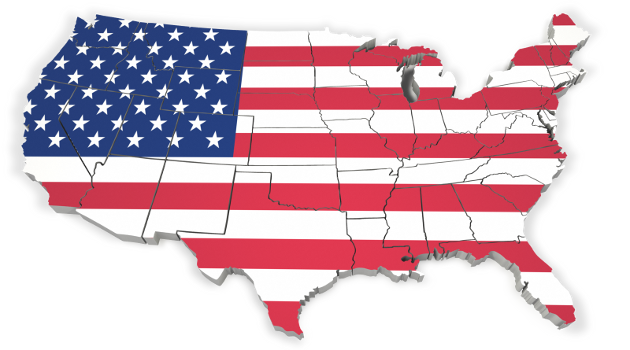When I wrote about the 2018 edition of Freedom in the 50 States, Florida ranked as the nation’s most libertarian state.
In the 2021 version, New Hampshire takes the top spot (reclaiming the lead it had back in 2016).
Here’s a map showing the 10 best and 10 worst states. One obvious takeaway is that New Hampshire deserves extra praise because it is in a region where there seems to be a general disdain for economic and personal liberty.

And here’s a table showing how all the states rank.
As you can see, Florida is still a very good state.
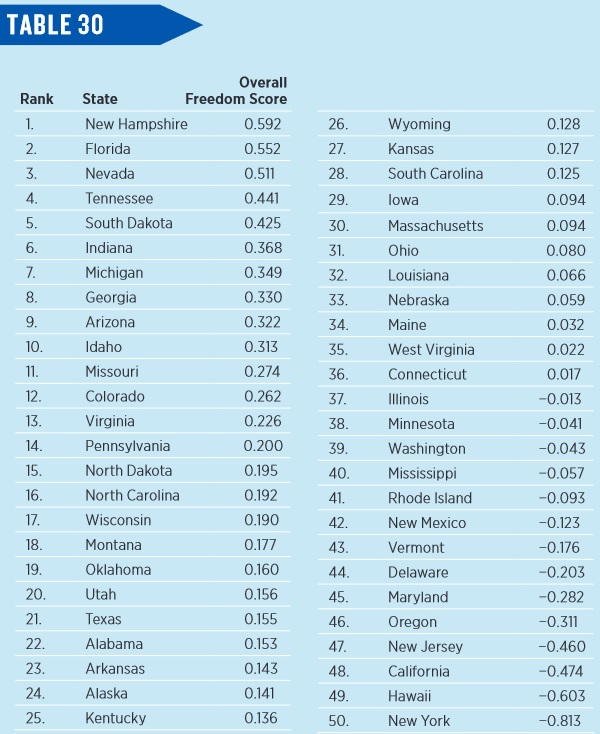
Indeed, Florida is getting better over time. All that happened in the new edition of Freedom in the 50 States is that New Hampshire got better even faster.
This seems to be a pattern.
You can see from Figure 9 that the best states have been getting better over the past 10 years while the worst states are stagnating.
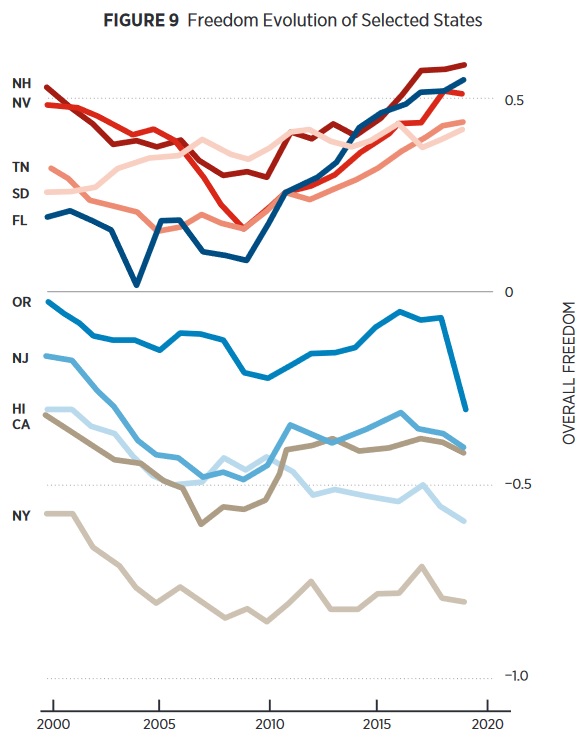
If you want some background on the publication, here’s how the authors (Will Ruger and Jason Sorens) describe their index.
…the 2021 edition examines state and local government intervention across a wide range of policy categories—from taxation to debt, from eminent domain laws to occupational licensing, and from drug policy to educational choice. …We…strive to make it the most comprehensive and definitive source for economic freedom data on the American states. …Although the United States has made great strides toward respecting each individual’s rights regardless of race, sex, age, or sexual preference, some individuals face growing threats to their interests in some jurisdictions. Those facing more limits today include smokers, builders and buyers of affordable housing, aspiring professionals wanting to ply a trade without paying onerous examination and education costs, and less-skilled workers priced out of the market by minimum-wage laws. Moreover, although the rights of some have increased significantly in certain areas, for the average American, freedom has declined generally because of federal policy that includes encroachment on policies that states controlled 20 years ago.
For more information, here’s how the states rank for economic freedom.
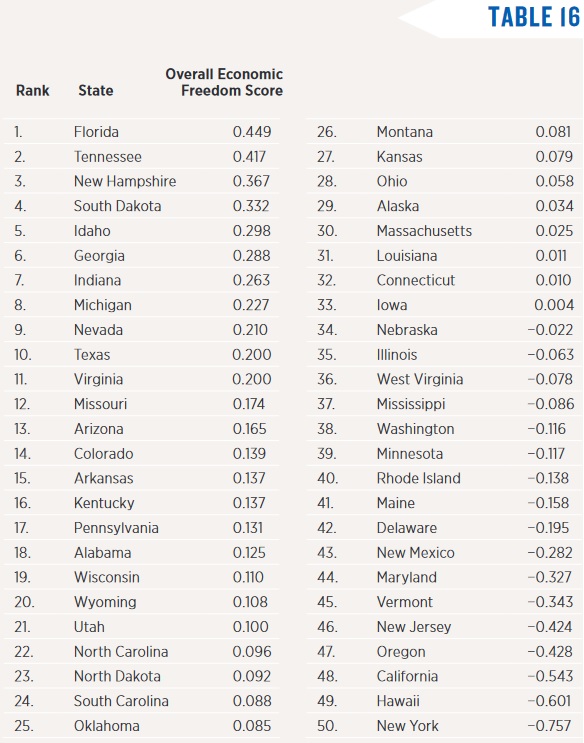
And here are the rankings for personal freedom.
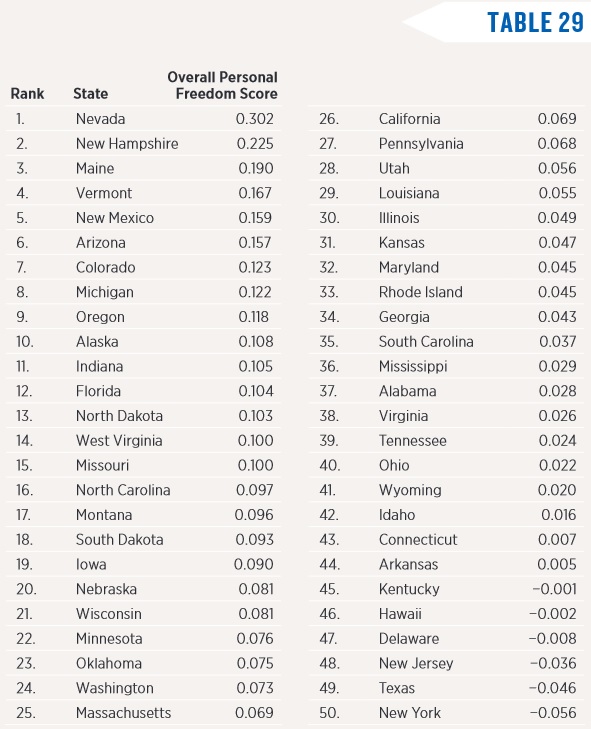
Let’s look at the some other tables.
Since I’m most interested in fiscal policy, I’m reflexively drawn to Table 7. Kudos to Florida, Tennessee, New Hampshire, and South Dakota (the absence of a state income tax really helps). And I’m surprised to see Massachusetts in the top 10 (it helps to a have a flat tax).
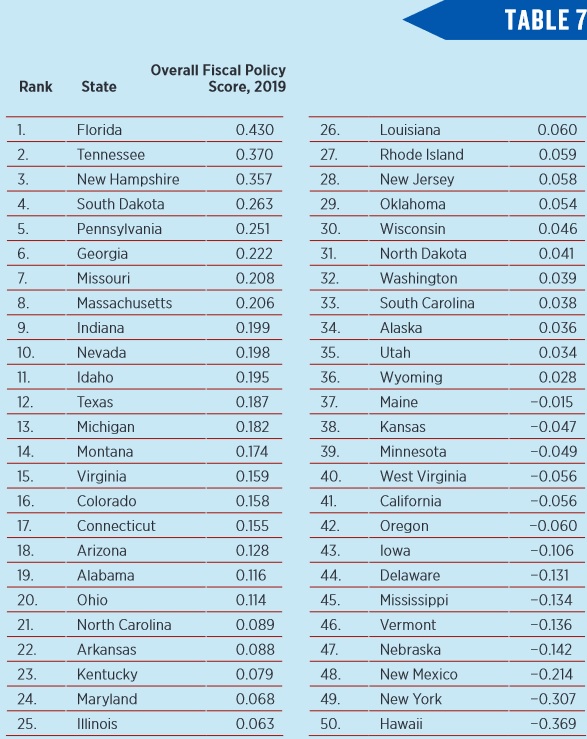
For what it’s worth, Hawaii really stinks. And I’m not surprised to see New York next to last.
Here’s a look at how states have changed since 2000.
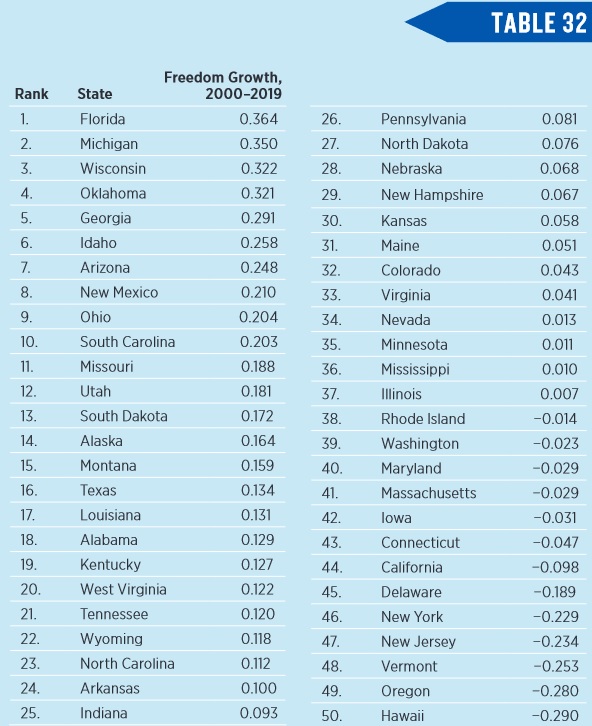
No big surprises, though it’s interesting to note that North Dakota (which was ranked #1 back in 2013) has suffered a relative decline (now ranked #15) simply because its improvement has been rather modest compared to the big improvements in other states.
P.S. For those interested in methodological issues, here’s a look at the formula used to determine which states have the most freedom and least freedom.

P.P.S. If you look at the weighting for personal freedom, you’ll find that educational freedom is 2 percent of a state’s score. Given the importance of school choice (for both individual education outcomes and national economic competitiveness), I wonder if that variable is insufficiently appreciated.

